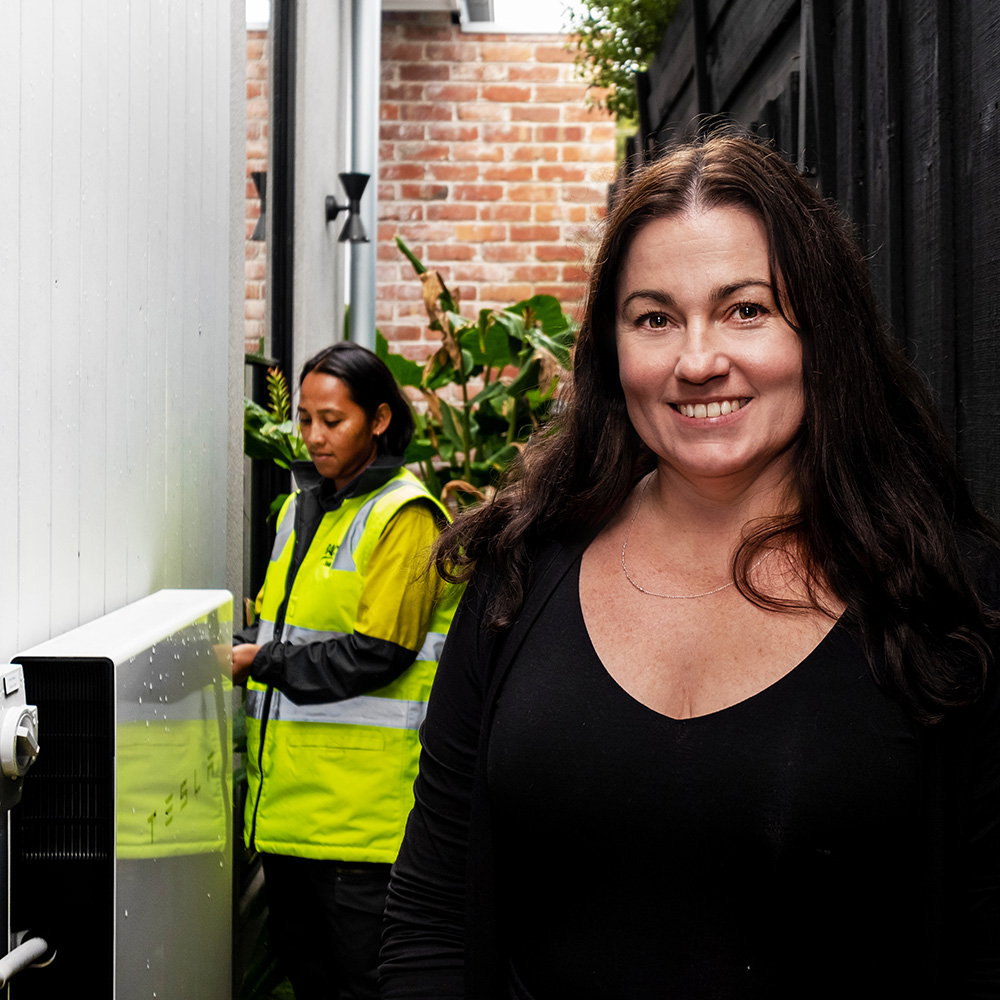Australians can enjoy lower energy bills and more job opportunities from a unified national strategy to support the uptake of consumer energy resources (CER) including rooftop solar, home batteries and electrification.
Powering Homes, Empowering People: A National Consumer Energy Resources Roadmap contains new modelling detailing the huge value of CER to Australia’s clean energy transition. It also outlines the key policies needed to capitalise on its the country’s world-leading uptake of rooftop solar and empower homes and businesses to embrace an electric future.
Australia has the highest uptake of rooftop solar in the world but it’s just the beginning of our electrification journey.
The Australian Energy Market Operator’s Integrated System Plan Step Change scenario describes the least-cost path to a future energy system that meets Australia’s renewable energy and emissions targets. By 2050, it recommends:
- 4 times more rooftop solar capacity
- 34 times more home battery capacity
- 135 times more orchestrated home battery capacity. Orchestrated batteries do more than just store energy for home use, they trade energy with the grid
Capacity, NEM (2009-10 to 2049-50, Step Change), AEMO Draft 2024 ISP
We are not currently on course to deliver these levels of batteries and orchestration. With new modelling from Oakley-Greenwood, we show that missing these forecasts would risk missing out on:
Over $22bn savings
for Australian taxpayers.
$35-71 off annual energy bills
for all Australian's regardless of whether they have any solar or battery.
Up to 3.8m more orchestrated batteries
generating huge bill savings for homes and businesses.
18,200 more Australian jobs
in manufacturing, sales and installation of clean energy resources (CER).
Most policy work in CER has focussed on solving supply-side issues as rooftop solar grows. This ignores consumers’ power as the primary decision-makers. Powering Homes, Empowering People: A National Consumer Energy Resources Roadmap focuses instead on the policies and measures that empower all Australians to embrace CER and reap the benefits.
It recommends 16 priority recommendations for homeowners and small businesses, renters, public housing tenants and commercial and industrial users. Download the report to view them all.
16 priorities
| Theme | Priority |
| Education | $100 million CER Community Empowerment Fund to support consumers to understand how CER can work for them |
| Training program for communities and organisations to build trusted advocates | |
| Review into household and business energy futures to better understand consumer attitudes and behaviours with CER | |
| Targets | Target on government-owned CER assets to demonstrate support and leadership |
| Government target for the orchestration of CER | |
| Incentives | National Home Battery Saver to accelerate uptake of batteries and orchestration |
| National Energy Productivity Scheme to broaden energy efficiency schemes to include CER | |
| Encourage market-based incentives to open up new revenue opportunities for consumers | |
| Provide opportunities for renters to participate in CER and incentivise landlords to upgrade | |
| Consumer Protection | Raise consumer protection awareness to improve consumer trust |
| Expansion of the NETCC to establish a national trusted protection scheme for consumers | |
| Specified dispute resolution under the role of the Ombudsman to provide consistency for consumers | |
| Unlocking & Maximising Network Capacity | Participation options for consumers to match their choice of and use for CER |
| Network visibility to ensure customers can actively participate and provide system network services | |
| National Technical Standards Governance Body to ensure products and services deliver on consumer promise | |
| Nationally consistent and genuine last resort Emergency Backstop Arrangements to ensure consumers get full value from their assets. |
Interested in contributing to similar work?

